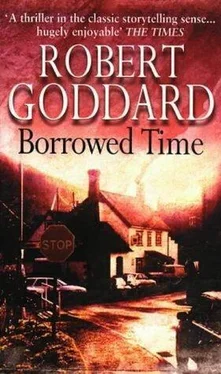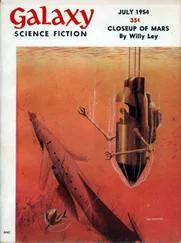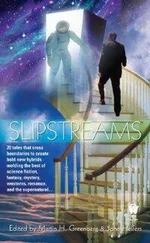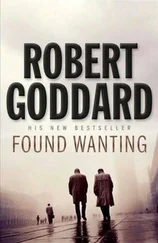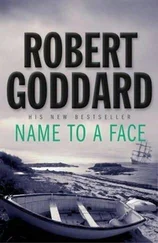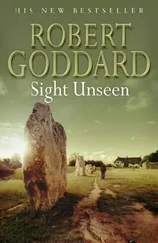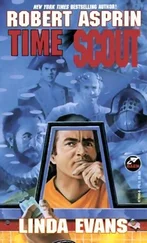Robert Goddard - Borrowed Time
Здесь есть возможность читать онлайн «Robert Goddard - Borrowed Time» весь текст электронной книги совершенно бесплатно (целиком полную версию без сокращений). В некоторых случаях можно слушать аудио, скачать через торрент в формате fb2 и присутствует краткое содержание. Жанр: Триллер, на английском языке. Описание произведения, (предисловие) а так же отзывы посетителей доступны на портале библиотеки ЛибКат.
- Название:Borrowed Time
- Автор:
- Жанр:
- Год:неизвестен
- ISBN:нет данных
- Рейтинг книги:5 / 5. Голосов: 1
-
Избранное:Добавить в избранное
- Отзывы:
-
Ваша оценка:
- 100
- 1
- 2
- 3
- 4
- 5
Borrowed Time: краткое содержание, описание и аннотация
Предлагаем к чтению аннотацию, описание, краткое содержание или предисловие (зависит от того, что написал сам автор книги «Borrowed Time»). Если вы не нашли необходимую информацию о книге — напишите в комментариях, мы постараемся отыскать её.
Borrowed Time — читать онлайн бесплатно полную книгу (весь текст) целиком
Ниже представлен текст книги, разбитый по страницам. Система сохранения места последней прочитанной страницы, позволяет с удобством читать онлайн бесплатно книгу «Borrowed Time», без необходимости каждый раз заново искать на чём Вы остановились. Поставьте закладку, и сможете в любой момент перейти на страницу, на которой закончили чтение.
Интервал:
Закладка:
Thanks largely to Bella, I stayed in distant touch with the Paxtons. She invited me to a Boxing Day lunch at The Hurdles, which Paul and Rowena also attended, along with Sarah and a humourless young lawyer called Rodney who was clearly more taken with her than she was with him. That and a few similar occasions apart, however, our worlds no longer overlapped. Sir Keith had given his daughters the use of The Old Parsonage as a weekend retreat within easy reach of Bristol, while he and Bella divided their time between Biarritz and Hindhead. The lives of Louise Paxton’s husband and children were back on an even keel. Sir Keith was settling into marriage and retirement. Sarah was looking ahead to her career as a solicitor. And Rowena was probably only waiting to finish her degree course before starting a family. Equilibrium had been restored. As for Louise and her stubborn but elusive memory, those who couldn’t forget her didn’t speak of her. Those, like me, who couldn’t stop wondering, knew better than to wonder aloud.
In March 1993, however, the Kington killings’ slide into a discarded past came abruptly to a halt. That month saw the publication of Fakes and Ale: the Double Life of Oscar Bantock , by Henley Bantock and Barnaby Maitland. I remember clearly the moment when I came across a review of the book and learned of its existence for the first time. It was an unremarkable Thursday afternoon. I was eating a snack lunch at my desk, waiting for our timber agent to return a call and leafing idly through the newspaper. Then the headline caught my eye. NEGLECTED EXPRESSIONIST’S LAST LAUGH AT ART WORLD. What had apparently already been made much of in the specialist art press was summarized in the column below.
This entertaining if sometimes uneven biography of Oscar Bantock, the eccentric English Expressionist who was murdered three years ago, is a collaborative venture between Bantock’s nephew Henley and the unorthodox art historian Barnaby Maitland. It reveals that Bantock, written off in his lifetime as a prickly drink-sodden recluse determined to plough a lonely and deeply uncommercial Expressionist furrow, was actually a womanizer of considerable charm, a popular and sociable pub-goer and a gifted forger of several different artists and styles. His scorn of naturalistic and sentimental work emerged in subtle pastiches of its most popular examples from which he made far more money than he ever did painting in his own name. Maitland’s researches are based on journals inherited from Bantock by his nephew and meticulous cross-checking with the records of dealers named in them, often to those dealers’ vigorous displeasure. They reveal the curmudgeonly idealist’s double life as the most mercenary of forgers. He seems to have stuck at first to middle-rank recently dead artists, notably a clutch of Edwardian specialists in drawing-room or garden scenes of children and pets, greetings card material in reasonable demand but not famous or pricey enough to attract expert attention. In the last few years of his life, however, he became more ambitious, mining his own Expressionist vein to produce several brilliant fake Rouaults and Soutines. Henley Bantock’s insight into his uncle’s drift towards cynicism supports Maitland’s contention that this change was triggered by the artist’s acceptance that he could not hope for recognition in his own right and that material reward represented his only prospect of satisfaction. If they are correct, which many irate dealers, auctioneers and owners will say they are not, Bantock and one of the few tireless fans of his own work, the late Lady Paxton, paid a heavy price for his revenge against the artistic establishment. The authors’ most startling conclusion is that the murders of Bantock and Lady Paxton in July 1990 may have had more to do with his output of fake art than any of the motives imputed to the man convicted of the crimes. If this sad and fascinating tale of frustration and forgery turns, as it well might, into a cause célèbre of miscarried justice, then the authors will have exposed a legal as well as an artistic scandal. But that, as they say, is another story.
I was dumbstruck. What had Henley been thinking of? His uncle a forger. Well, that was between him, his conscience and his customers. I didn’t care one way or the other. But I did care about Louise Paxton. And it was being suggested according to the reviewer-on what evidence he didn’t bother to mention-that there was more to her murder than met the eye. More, by implication, than could be laid at Shaun Naylor’s door.
I telephoned Sarah that evening. Before I could explain why I’d called, she guessed.
“You’ve read Fakes and Ale ?”
“No. Just a review.”
“Then you might be making more of it than you should. Henley Bantock sent me an advance copy. Crowed about his theory in a covering letter. Said I’d be bound to find it persuasive. Well, I don’t. He hasn’t produced a shred of evidence to support it.”
“But what is his theory?”
“That Oscar was murdered because several dealers he’d sold fakes to were afraid he meant to go public with the story of how he’d duped them. And that Mummy had the bad luck to be there when it happened. But he can’t back it up. The forgery business seems to be true. But obviously that wasn’t sensational enough for the publisher. So, Henley’s gilded the lily with this wild idea that just happens to tally with Naylor’s defence.”
“But surely, if there’s no evidence-”
“It’ll come to nothing. Exactly. That’s why I didn’t bother to tell you about it. But look, I have to go out and…” She seemed to be whispering to somebody in the background. “Why don’t I send you the book, Robin? It’ll be quicker than you ordering a copy. Then you’ll see what I mean.”
It arrived two days later. The cover illustration was one of Oscar Bantock’s own paintings, a blurred but eye-catching self-portrait depicting the artist standing in a luridly decorated bar drinking from a tankard shaped in the likeness of a death’s head. There was a queasily prophetic quality to it that made me think Sarah might have been glad to get it off her hands.
According to the blurb on the dust jacket, Henley Bantock was a former local government officer. Presumably, he and Muriel had already earnt enough from Uncle Oscar’s art to quit the bureaucratic life. Now they were aiming to cash in on his scandalous secrets while enjoying the luxury of condemning them. With Barnaby Maitland to lend the whole thing some scholarly gloss. Maitland had books on two other twentieth-century forgers-the notorious “Sexton Blaker” Tom Keating and the Vermeer specialist, Hans van Meegeren-to his credit. He must have seemed an obvious choice as co-author. Just as the journals Henley had discovered at Whistler’s Cot must have been too succulent an opportunity for Maitland to resist.
I read the book in one long sitting, enduring Henley’s self-serving hatchet job on his uncle’s character for the sake of Maitland’s convincingly detailed account of how and why he’d taken to forgery. And even that was only a necessary preamble to what really concerned me. We came to it slowly, via Maitland’s meticulous verification of the output of forgeries recorded in the journals. Oscar had wanted the truth to come out after his death, of course. That was the point of them. To show what fools the experts were to denigrate his work. To prove they couldn’t tell good from bad, true from false, real from fake. And he’d proved his point. Perhaps too well. The Rouaults and Soutines were his fatal mistake, in Maitland’s opinion. They fetched high prices despite doubts about their authenticity. Such high prices that the truth about them threatened the reputations and livelihoods of influential dealers and powerful middle-men. The authors reckoned Oscar let it be known he meant to publish the facts. It would have been his glorious V-sign to the self-appointed arbiters of taste who’d done him down. It would have fulfilled his true motive for turning out fakes, which was never really money in their opinion so much as distorted pride.
Читать дальшеИнтервал:
Закладка:
Похожие книги на «Borrowed Time»
Представляем Вашему вниманию похожие книги на «Borrowed Time» списком для выбора. Мы отобрали схожую по названию и смыслу литературу в надежде предоставить читателям больше вариантов отыскать новые, интересные, ещё непрочитанные произведения.
Обсуждение, отзывы о книге «Borrowed Time» и просто собственные мнения читателей. Оставьте ваши комментарии, напишите, что Вы думаете о произведении, его смысле или главных героях. Укажите что конкретно понравилось, а что нет, и почему Вы так считаете.
